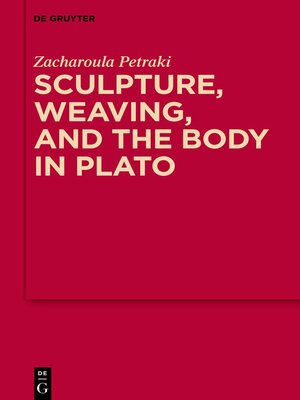
Sign up to save your library
With an OverDrive account, you can save your favorite libraries for at-a-glance information about availability. Find out more about OverDrive accounts.
Find this title in Libby, the library reading app by OverDrive.



Search for a digital library with this title
Title found at these libraries:
| Library Name | Distance |
|---|---|
| Loading... |
Plato's Timaeus is unique in Greek Antiquity for presenting the creation of the world as the work of a divine demiurge. The maker bestows order on sensible things and imitates the world of the intellect by using the Forms as models. While the creation-myth of the Timaeus seems unparalleled, this book argues that it is not the first of Plato's dialogues to use artistic language to articulate the relationship of the objects of the material world to the world of the intellect.
The book adopts an interpretative angle that is sensitive to the visual and art-historical developments of Classical Athens to argue that sculpture, revolutionized by the advent of the lost-wax technique for the production of bronze statues, lies at the heart of Plato's conception of the relation of the human soul and body to the Forms. It shows that, despite the severe criticism of mimēsis in the Republic, Plato's use of artistic language rests on a positive model of mimēsis.
Plato was in fact engaged in a constructive dialogue with material culture and he found in the technical processes and the cultural semantics of sculpture and of the art of weaving a valuable way to conceptualise and communicate complex ideas about humans' relation to the Forms.







